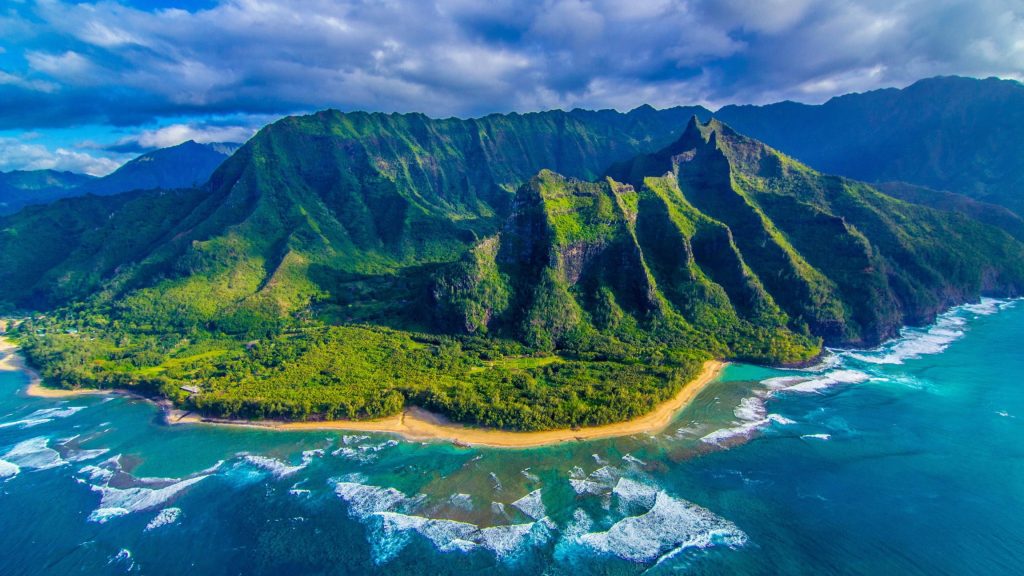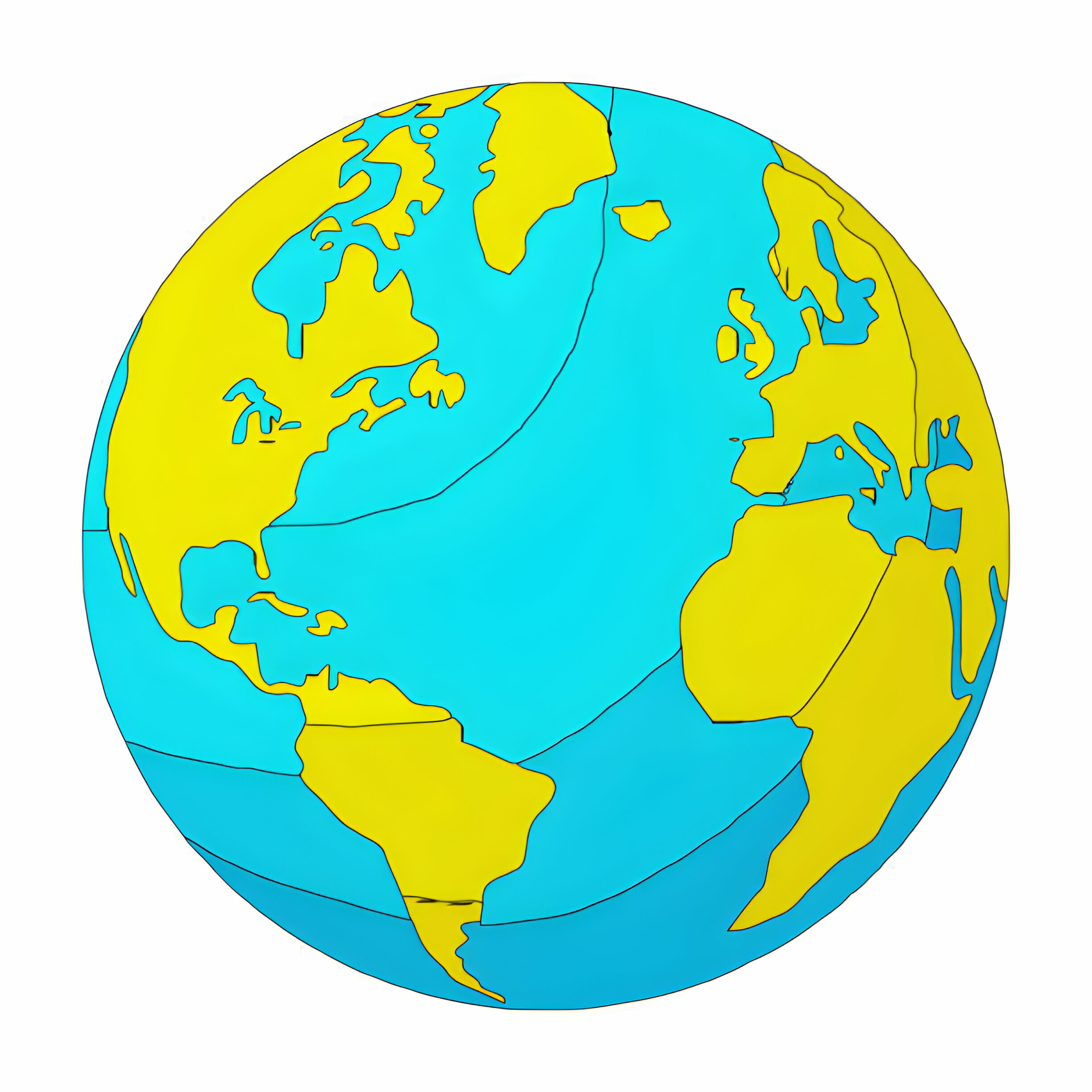Table of Contents
With its beautiful beaches, volcanic landscapes, and idyllic weather, Hawaii is a tropical paradise located in the middle of the Pacific Ocean. But when it comes to hemispheres, there is often confusion about where exactly Hawaii falls on the map. So what hemisphere is the Hawaiian archipelago located in?
What Hemisphere is Hawaii In?
| Question | Answer |
|---|---|
| What hemisphere is Hawaii in? | The Northern Hemisphere |
Hawaii’s geographic coordinates place it firmly in the Northern Hemisphere between 19°N and 22°N latitude.
The Hawaiian Islands stretch across both hemispheres, but the main islands of Maui, Oahu, Kauai, etc. reside north of the equator in the northern hemisphere.
Only the small, uninhabited Leeward Islands reach down into the Southern Hemisphere as the archipelago extends toward the equator.
Hawaii is in the Northern Hemisphere
The main Hawaiian islands of Maui, Oahu, Kauai, Molokai, Lanai, Niihau, and the Big Island of Hawaii are all situated in the Northern Hemisphere, between the 19th and 22nd parallels north of the equator.
This places Hawaii solidly in the Northern Hemisphere, which is defined as the half of Earth north of the equator. The equator is an imaginary line circling the middle of the planet between the North and South Poles.
Why There is Confusion About Hawaii’s Hemisphere
Given Hawaii’s sub-tropical location far south of the continental United States, it may seem counterintuitive that it falls in the Northern Hemisphere.
However, Hawaii is well north of the equator, which divides the Northern and Southern Hemispheres at 0° latitude. The Hawaiian Islands stretch between 19°N and 22°N, clearly in northern territory.
The main reason for the confusion is that Hawaii lies south of the Tropic of Cancer, at approximately 23.5°N. The tropics are the regions between the Tropic of Cancer and the Tropic of Capricorn at 23.5° north and south of the equator respectively.
Hawaii’s relatively southern latitude for a U.S. state gives it tropical climatic conditions, despite technically being outside the tropics and firmly in the Northern Hemisphere.
Read also: Reasons to Never Visit Honolulu
Geographic Coordinates of Hawaii
To understand Hawaii’s hemisphere positioning, it helps to look at the specific geographic coordinates of the main islands:
- Hawaii (Big Island): 19°34′N 155°30′W
- Maui: 20°48′N 156°20′W
- Oahu: 21°28′N 157°59′W
- Kauai: 22°03′N 159°30′W
- Molokai: 21°08′N 157°02′W
- Lanai: 20°50′N 156°56′W
- Niihau: 21°54′N 160°10′W
The north latitudes clearly show that the entire Hawaiian Island chain falls north of the equator, which is located at 0° latitude.
While Hawaii is south of the continental United States, it is far from the Southern Hemisphere. The Tropic of Cancer at 23.5°N demarks the northern boundary of the tropics, which Hawaii just crosses below.
Features of the Northern Hemisphere
As part of the Northern Hemisphere, Hawaii shares certain climatic and seasonal characteristics with other northern regions including:
- The summer solstice occurs in June
- Winter solstice occurs in December
- North Star appears higher in the sky
- The sun rises in the east and sets in the west
- Hurricanes rotate counterclockwise
Hawaii’s northern location means it experiences northern seasons, with summer starting in June and winter in December, even though the weather stays tropical year-round.
Hawaii’s Climate and Tropical Location
Hawaii is the only state with a tropical climate, thanks to its geographic position. Let’s look at how Hawaii ended up with a tropical climate despite its northern hemisphere location.
Effects of Hawaii’s Low Latitude
Latitude strongly influences temperature and precipitation. The closer to the equator, the warmer the climate. Hawaii’s low latitude means it receives more direct sunlight year-round keeping temperatures warm.
The sun is never directly overhead in Hawaii but reaches summertime peaks of 78° from the horizon. This contributes to consistent tropical temperatures averaging 75-80°F near sea level.
Hawaii’s low latitude also puts it squarely in the tropical rain belt around the equator. Intense sun and ample moisture work together to create Hawaii’s tropical rainfall patterns.
Moderating Effects of the Pacific Ocean
Surrounded by the vast Pacific, Hawaii also benefits from oceanic climate moderation. Water warms and cools more slowly than land due to its higher heat capacity.
The surrounding oceans regulate temperatures across Hawaii, preventing extreme seasonal highs and lows. Its maritime environment also contributes moisture for ample tropical rainfall.
Hawaii’s Unique Volcanic Topography
Hawaii’s volcanic formation created shield volcanoes with high elevations. This results in unusual altitudinal climate zones ranging from tropical at sea level to subalpine on mountain peaks.
As elevation increases, temperatures drop providing climatic diversity across the islands. The highest points can receive snowfall in winter – an unusual occurrence for a tropical latitude.
So while Hawaii is technically in the Northern Hemisphere, its specific geographic, topographic and oceanic characteristics give it a classic tropical climate normally associated with southern regions around the equator.
The Hawaiian Islands Chain Extends Across Hemispheres
While the main Hawaiian islands are in the north, the entire archipelago crosses the equator and spans both hemispheres.
Main Islands in the Northern Hemisphere
The 7 largest and most populated islands including Hawaii, Maui, Oahu, Molokai, Lanai, Niihau, and Kauai form the northwestern end of the Hawaiian chain.
As we’ve discussed, these main islands reside firmly in the Northern Hemisphere between 19°-22°N latitude. They represent the exposed summits of the largest volcanoes that make up the Hawaiian hotspot on the Pacific Plate.
Leeward Islands Cross Into the Southern Hemisphere
The Leeward or Northwestern Hawaiian Islands extend west and south in a chain toward the equator. These smaller islands and atolls are the eroded remains of now-extinct volcanoes.
The Leeward Islands entering the Southern Hemisphere include:
- Kure Atoll: 28°25′N 178°20′W
- Midway Islands: 28°12′N 177°21′W
- Pearl and Hermes Atoll: 27°50′N 175°50′W
- Lisianski Island, Neva Shoal: 26°00′N 173°58′W
- Laysan Island: 25°46′N 171°44′W
- Maro Reef: 25°25′N 170°35′W
- Gardner Pinnacles: 25°00′N 167°59′W
- French Frigate Shoals: 23°45′N 166°10′W
You can see how the latitudes drop below 23.5°N across this island chain until eventually crossing the equator. Only the uninhabited Leeward Islands reach into the Southern Hemisphere.
But the Hawaiian archipelago as a whole spans both hemispheres as it extends over 1,500 miles across the central Pacific Ocean.
Hawaiian Culture and History
The Hawaiian islands may be geographically isolated, but their Polynesian inhabitants navigated cleverly between hemispheres to find and settle the remote islands.
Origins in the Southern Hemisphere
Hawaiian ancestors ventured purposefully across hemispheres on voyaging canoes to discover and colonize the islands. The first Polynesians to inhabit Hawaii are believed to have come from the Marquesas Islands around 300-600 AD.
The Marquesas sit at 10°S latitude deep in the Southern Hemisphere. From this tropical base, brave Polynesian explorers completed an arduous journey northward to eventually discover Hawaii.
Tahitian travelers contributed to early Hawaiian settlement as well. They made the journey from French Polynesia at 18°S traveling northward below the equator before reaching Hawaii’s Northern Hemisphere location.
Voyaging by Stars and Ocean Swells
Navigating without modern instruments, the Polynesians skillfully used stars, waves, winds and currents to voyage between hemispheres and find remote Pacific islands.
Their knowledge of astronomy helped them steer northward using stars like Arcturus and the Southern Cross to guide them from the Southern to the Northern Hemisphere on migration voyages.
Reading ocean swells and wave patterns also aided these master navigators in bisecting the equator to discover Hawaii’s northern position.
Modern Transits to Hawaii Cross the Equator
In the modern age of aviation and maritime navigation, Hawaii’s hemispheric location hardly matters for those visiting or transiting to the islands.
But it’s still intriguing to consider that air and sea routes connecting Hawaii to global destinations typically cross hemispheres.

Flights To and From Asia Cross at Midpoint
Flights between Hawaii and major Asian hubs like Tokyo, Seoul, Beijing, Shanghai, and Singapore by the shortest great circle routes cross the equator about midway over the Pacific.
The same goes for travel between Hawaii Australia and New Zealand, with equator crossings around the Kiribati region in the central Pacific. The hemispheric midpoint provides an optimal fuel and time-efficient location for east-west plane changeovers.
Cruises Transit the Equator
Cruise liners sailing to Hawaii from the U.S. West Coast will nearly all cross the equator at some point during the Pacific transit.
The popular San Diego to Hawaii cruising route crosses the equator around 140°W longitude, nearly halfway to the islands. Vessels from even further south such as Australia and New Zealand will also cross hemispheres.
Equator crossing ceremonies are sometimes held aboard these cruises, celebrating the transit from the Northern to Southern Hemisphere with fun rituals led by King Neptune.
Shipping Lanes Connect Hemispheres
Cargo ships and container vessels transit the equator daily as they shuttle goods between Asia, Oceania, mainland U.S.A., and Hawaii.
Major Pacific shipping lanes connect global ports across the hemispheres. Hawaii’s position makes it a pivotal transshipment hub for international commerce crossing between the Northern and Southern Hemispheres.
So in many ways, Hawaii remains a bridging point connecting cultures, commerce, and transportation across hemispheres, just as it did for pioneering Polynesian explorers centuries ago.
Final Words- What Hemisphere is Hawaii In
While Hawaii is autogenerated north of the equator, its tropical location and southern latitudes create confusion about which hemisphere it belongs to. But the Hawaiian islands unquestionably reside in the Northern Hemisphere.
Hawaii’s geographic coordinates place it between 19-22° north latitude, well above the equator. Only the uninhabited Leeward Islands reach down into the Southern Hemisphere as the archipelago extends toward the equator.
Hawaii’s remote Northern Hemisphere location, combined with the moderating effects of the Pacific Ocean and its unique volcanic topography, gives it a beautiful tropical climate making Hawaii a true Pacific paradise.




